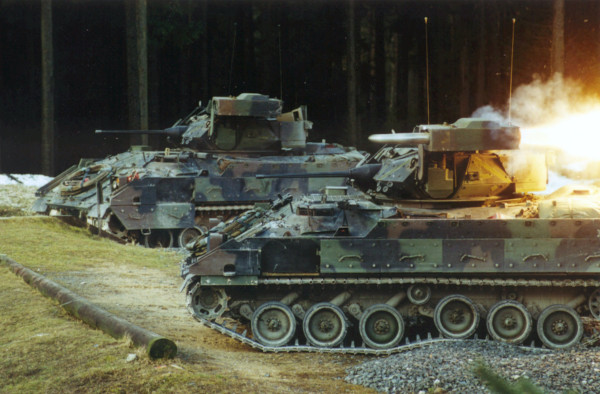

The Army will likely end up spending upwards of $1.57 billion to develop a replacement for the Bradley Fighting Vehicle that’s served the U.S. military for nearly four decades, according to a new assessment from the Government Accountability Office — and that’s just for a fleet of prototypes.
As of January 2020, the service had doled out roughly $366.64 million in funding as part of a middle-tier acquisition program for the Optionally Manned Fighting Vehicle Increment 1 the service initiated in September 2018, according to the GAO report.
The Army is expected to spend another $1.2 billion to procure 14 prototype vehicles apiece from two separate defense contractors, an acquisition that, planned for this past March, fell apart when the service cancelled its solicitation in January in order to “revisit the requirements, acquisition strategy and schedule” prior to prototyping.

The cancellation was reportedly prompted by the fact that the service only received one bid, from General Dynamics Land Systems, for the OMFV prototyping competition, as Army leaders told Defense News at the time.
According to the GAO report, the Army had previously planned on handing out an initial production contract award in late fiscal year 2023 and fielding the initial replacement vehicle by some time in early fiscal year 2026, but those dates are now up in the air due to the January cancellation.
“Officials stated that Army leadership is still committed to moving forward with the program, but they will need to reassess the achievability of their requirements within the desired timeframe,” according to the GAO report.
As Task & Purpose previously reported, the OMFV — part of Army Futures Command’s Next-Generation Combat Vehicle (NGCV) program — is just the latest attempt to replace the Bradley that has spanned nearly two decades.
In 1999, the Army adopted the Future Combat Systems (FSC) Manned Ground Vehicles (MGV) program was initiated as part of a broad effort to make the service’s legacy forces “lighter, more modular, and — most importantly — more deployable,” as the Army put it at the time.
That program was cancelled a decade later in 2009 and immediately replaced with the Ground Combat Vehicle program in 2010, which sought to replace the Bradley with the a Ground Combat Infantry Fighting Vehicle before being cancelled in 2014 amid rising costs and expanding requirements.